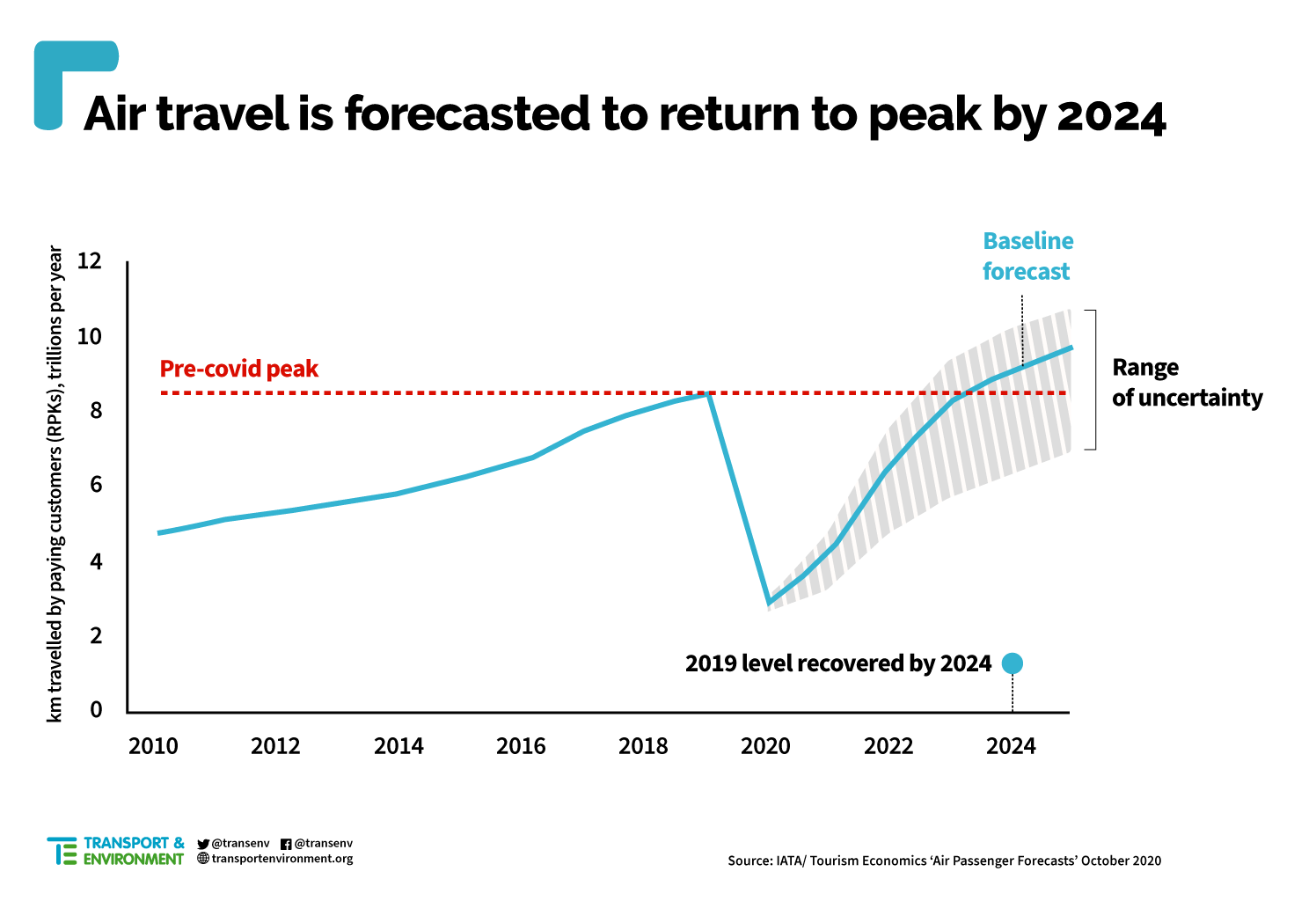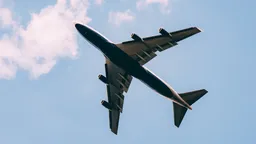
Interested in this kind of news?
Receive them directly in your inbox. Delivered once a week.
Jo Dardenne, aviation manager at T&E, said: “As expected, airline emissions went through the floor last year. Taxpayers who gave billions to save carriers expect them to take a sustainable path to recovery. The industry can’t take the cash and return to the record pollution seen before Covid.”
Air travel could return to its 2019 peak as early as 2024, according to forecasts by the airline industry body IATA and others.[2] T&E said governments should continue to support aviation workers through the current crisis, but airlines must be required to start using cleaner fuels and pay a carbon price for all European flights once conditions improve.
In June the European Commission will propose a law requiring airlines to use green fuels. It will also say whether the EU carbon market should be reformed and extended to all flights entering and exiting Europe. Currently, airlines only have to buy EU pollution permits for emissions on flights within the EEA, and also get a hefty amount of free emission permits.
Jo Dardenne concluded: “There’s no reason to return to peak pollution after the pandemic. Airlines can build back better by starting to use green fuels and paying for all their pollution, and the EU should require them to do so.”
Notes to editors:
[1] T&E analysed 2020 emissions data reported by airlines as part of their obligations under the EU emissions trading system: https://ec.europa.eu/clima/ets/oha.do
T&E’s analysis is based on verified emissions reporting of the top 50 airlines in 2019, representing 87% of emissions. Major airlines such as Air France and Transavia are yet to report as of 2 April 2021. Remaining airlines’ emissions assumed to reduce at the same rate as the largest 50. Full methodology available here:
https://www.transportenvironment.org/state-aviation-ets
[2] On 29 March, T&E released data for the global emissions of European airlines in 2019. Today’s publication reveals the emissions of airlines on flights within Europe in 2020.
[3] See: Covid-19 outlook for air transport and the airline industry, B. Pearce, chief economist, International Air Transport Association (IATA), November 2020. p 11.
See also the forecast by Eurocontrol, which co-ordinates national air traffic control agencies: Five-Year Forecast 2020-2024, Eurocontrol, November 2020. p 9.


